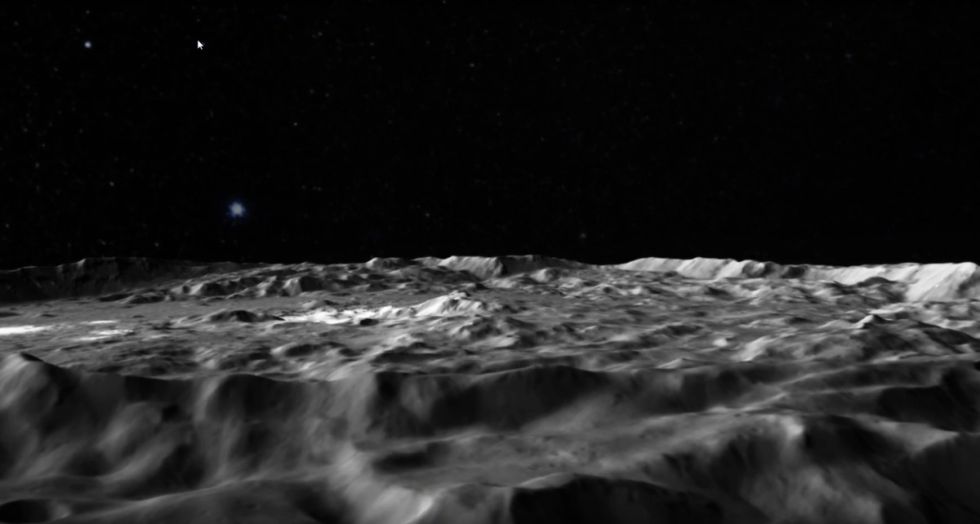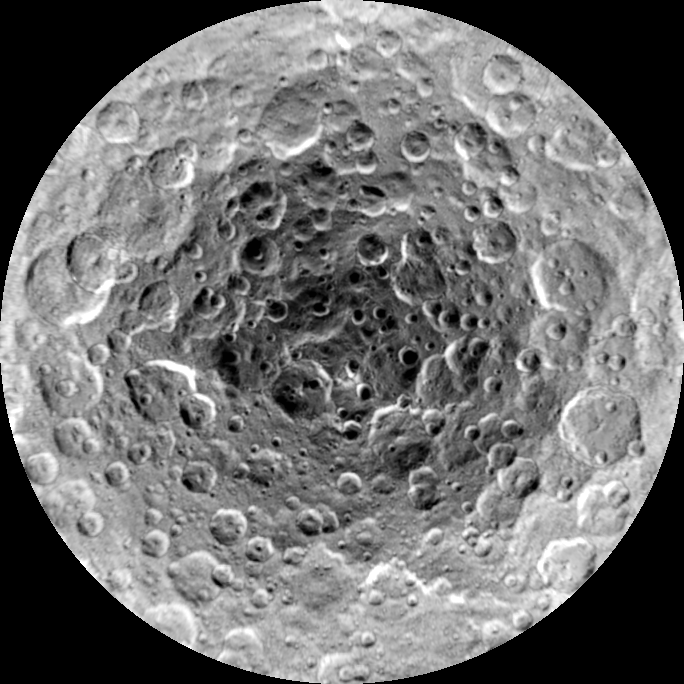NASA: there is water on Ceres too

Most scientists are convinced that life, its version, which we all know, can only exist if there is liquid water. This, of course, is not the only factor, but one of the main factors. In the light of recent discoveries, we learned that water in the liquid phase can exist on Mars, Europe, Enceladus, and even Pluto. Basically, we are talking about subglacial oceans or seas. It is just such an ocean, as NASA scientists believe, that Ceres could splash in the distant past. Perhaps the liquid water on this celestial body is now, of course, not on the surface.
About this largest asteroid belt facility, Dawn's probe, which reached the planetoid in 2015, helped collect more information. The spacecraft sent more than 54,000 photographs to Earth. With his help, scientists have studied the spectrum of sunlight reflected from the surface of various regions of the planetoid. Added knowledge to the piggy bank and gamma-ray detector, which was able to detect the presence of many chemical elements at depths of up to 1 meter.
And now what?
During two years of studying the planetoid, the Dawn probe discovered a large amount of hydrogen. Scientists believe that hydrogen is present there not only in the form of hydroxides, but also in the form of one of the two elements of the water molecule. Near the surface, the water in Ceres is in its solid phase, that is, in the form of ice.
')
When flying over some craters, Dawn discovered that the bottom and walls of such craters are covered with water ice. Ice can exist here virtually unchanged for billions of years. The fact is that there is no atmosphere in Ceres and it is very cold - the temperature rarely rises above 110 degrees Kelvin. The ice was found in at least 10 different craters, including the small Oxo crater, located near the north pole of the planetoid. In 634 other craters, it is believed that there are areas where sunlight does not penetrate - never.
In such craters, water ice can be saved, because if the sun's rays do not illuminate the ice, it does not sublimate, the water remains in a crystalline state.
According to Carol Raymond (Carol Raymond), deputy supervisor of the mission of Dawn, the ice supposedly appeared recently in this crater. But where does he come from?
Probably, in some cases, comet and other asteroids that occasionally collide with this planetoid deliver ice to Ceres. Ice is also found on Mercury, but there, close to the Sun, water is formed, most likely, under the influence of the "solar wind". Hydrogen reacts with oxygen on the surface of the planet, forming water, which then freezes.
On Ceres, most likely, everything is different , because it is too far from the Sun, and the solar wind here is not at all as intense as on Mercury.
But perhaps in the distant past of Ceres there was a period when the subglacial ocean existed there. Scientists say that there is indirect evidence. “We can only study traces on the surface, but we have every reason to believe that there was an ocean beneath the solid surface of the planetoid,” Raymond said. She also claims that she considers Ceres to be the equivalent of Europe and Enceladus in terms of the possible presence of life at these sites.

This shows a gradual change in the illumination of the surface of Ceres over time (Source: Nature Video)
Dawn was originally sent to Ceres in order to obtain information about the initial stages of the formation of the solar system. In the asteroid belt, according to scientists, the material from which the planets were formed as a result of the influence of gravitational and other forces should remain.
As for Ceres itself, it may well be that this planetoid began to heat up after it had gained a certain mass. The reason for heating is radioactive elements, which a few billion years ago were more in the solar system than they are now. Heating has led to the fact that the ice began to melt and liquid water appeared under Ceres, under the surface of the planetoid. It was probably a fairly large ocean. Now the task of scientists is to find out whether the conditions of Ceres, its internal reservoir, were suitable for supporting life, even if it were the most primitive.
It can be considered proven, experts say, that Ceres was gradually moving away from the Sun. And since there was no atmosphere, the planetoid quickly cooled. The ocean gradually began to freeze. Now there is a chance that there, on Ceres, remained liquid water. This is no longer an ocean, but separate inclusions, “windows” of very salty and cold liquid water. Perhaps this salt water, going outside, forms the mountain Ahuna Mons, whose height is already 4 kilometers, and the base diameter is 17 kilometers. In all likelihood, this mountain is a typical, although very large, cryovolcan.
Ahuna Mons is not the only place in Ceres where cryovolcanism is observed. The instruments of the Dawn probe have recorded cryovolcanic activity in other regions of the dwarf planet. True, this is not about the mountains, similar to that described above. A series of craters formed during the impact of meteorites on the surface of the planet. At the same time, these craters are flat, which may indicate that the crater was filled with liquid water after a meteorite impact. This phenomenon can be described as water lava, which, after filling the crater, freezes.
Ceres is the closest to the Sun and the smallest among the known dwarf planets of the Solar System. It is located, like a number of other planetoids, in the asteroid belt. Ceres was discovered on January 1, 1801 by the Italian astronomer Giuseppe Piazzi at the Palermo Astronomical Observatory. For some time, Ceres was regarded as a full-fledged planet of the solar system. According to the results of the clarification of the concept “planet” by the International Astronomical Union on August 24, 2006 at the XXVI General Assembly of the IAS, it was referred to as dwarf planets. She was named after the ancient Roman fertility goddess Ceres.
Source: https://habr.com/ru/post/400125/
All Articles